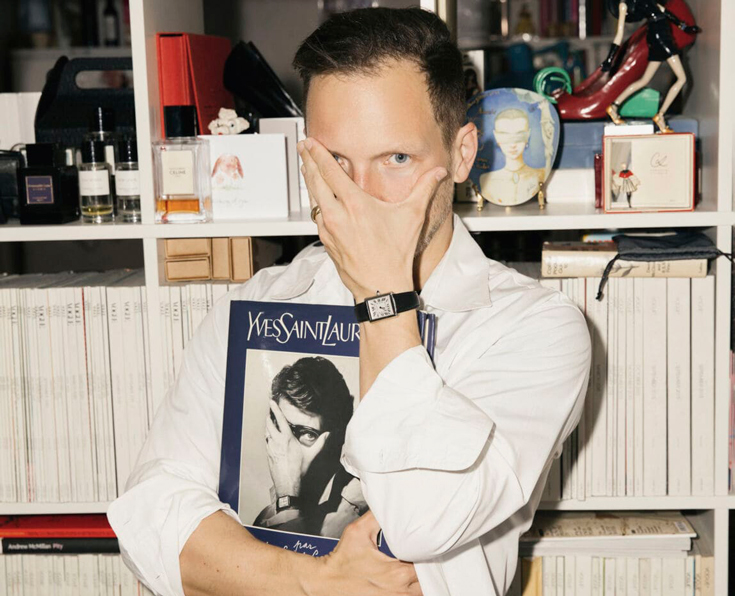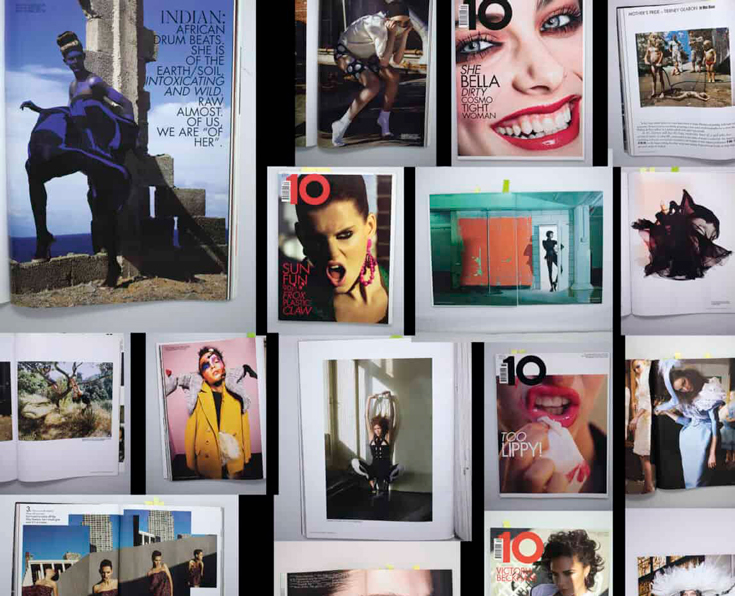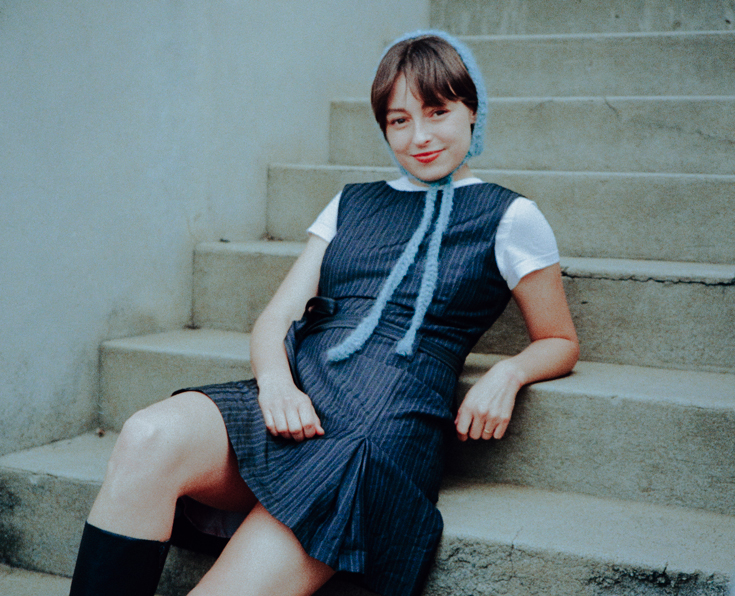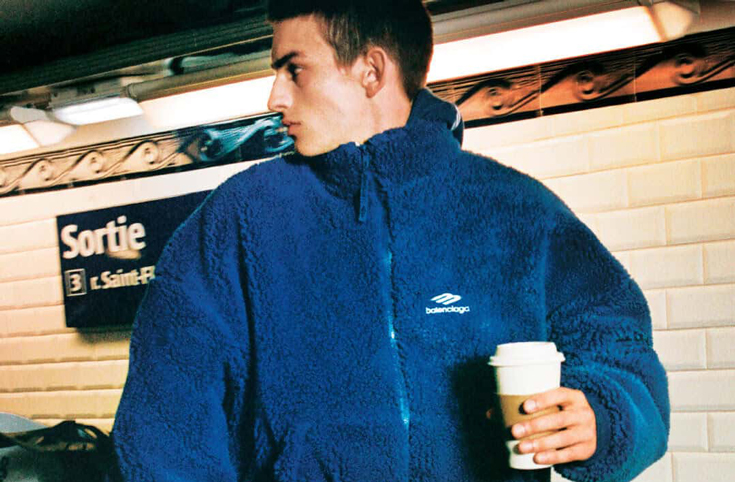THE LIFE AND TIMES OF KAREN BINNS

Karen Binns has flavour. She made a promise to herself at a young age when she was growing up in Brooklyn, New York, that she would “never be typical”. And, boy, did she keep that promise. We’re crowning her queen of the 1980s club scene in New York. Oh, how she reigned supreme. We do love to take a trip down an iconic memory lane…
“I dreamt a lot as a kid,” she says over the phone from her home in London as she packs for a getaway to Ibiza. “I grew up in the 1970s, quite – I don’t want to say militant – but that ‘Black and proud’ feeling.” Developing a sense of fashion from her stylish parents who would hang out in Harlem, Binns decided that she was never going to look the way people thought she should look. At the age of 14, her mother took her to the best thrift shops, instilling in her the belief that “as a Black girl you must do better, you must have good taste”. It’s something she has taken with her every day since. “The first thing she said to me was don’t ever forget you’re Black. That’s number one. I had a lot of pride on that level, but I also wanted to defy any aspect of what a Black girl should be in the 1980s.”
Her hair became her signature – she cut it all off and dyed it blonde (yes, before Salt- N-Pepa) and explored punk, new wave and a whole lot of looks she called her “phases”. (Her favourite was her Rastafarian alternative punk phase.) “I came on the scene because I bought every issue of Interview magazine and The Manipulator. Interview introduced me to the whole idea of Andy Warhol and the nightlife in New York and the idea of ‘this is how you can change your life – go to the right places, meet the right person, and your life will change’.” And it did.
After seeing that everybody was going to the Mudd Club on the back of Interview, Binns wanted to be there. “It looked great, it looked cool and I thought to myself I’m gonna go. So I braided my hair and did some kind of mohawk thing. I went there one Monday night and I stood away from the crowd [outside] on my own, because I had just read the Edie Sedgwick book and it said something like, ‘Stand alone, have confidence and you will get what you want – people will come to you.’ So I stood away from the big screaming crowd and the next thing I know, the guy on the door points straight at me and I pointed to myself, and he says, ‘Yeah, you.’ I just nodded and didn’t open my mouth. Not only did I get in within five minutes of being there, I got in for free. When I got in I knew I had the fucking energy. I became a regular and that’s how I started meeting people. I remember seeing David Bowie and I was like, ‘Oh, I’m in the right spot.’”
Originally from Brooklyn’s Flatbush neighbourhood, Binns used to go to reggae and ska parties, dressed up “a bit punk, a bit ska, I was into that whole two-tone scene”. Teaming up with two guys who held parties in the area, Binns suggested they take them to Manhattan. Naming themselves the Soulboys, they created moving warehouse parties in Downtown. “We came to Manhattan every Saturday night. We brought West Indian food and large wall screens of the carnival and we would play hip-hop, reggae, ska and punk music. It was the most fashionable thing to happen, to the point where Leigh Bowery came with his whole crew to my party. He said, ‘We love it here,’ and validated it. I got a big reputation from doing that – you don’t realise you’re this cool thing. I had no idea. My mother had always said, ‘Work the attractive girl in you, because that means someone will always take a second to look at you, and they just might have something to say. So that was how I met Jean-Michel.”
The friendship Binns had with Jean-Michel Basquiat defined a lot of her twenties and thirties. “I had met someone who was like my mirror in the way he thought,” she says. They met at poetry readings, where he always looked interesting. “I used to think, ‘Who’s that guy with the dreads? He always looks like his clothes are falling off but the colours are always coordinated.’” It’s known that Binns was a muse to Basquiat, but she emphasises she was a muse through their conversation, not just her looks. “I was more of a best friend muse. He would paint in his loft space on Great Jones Street and we would talk about what it’s like to be Black in the ’80s and how we would be perceived if we walked into a restaurant or nightclub and how we would do whatever we could to destroy the typical response one would get. We clicked because we thought the same way. There’s a lot of his artwork where you see a lot of writing. They’re the conversations we used to have.”
Basquiat was like a little brother to Binns; he reminded her of her older brother who was a recovering drug addict at the time. “I loved Jean because he was unapologetic. His arrogance was completely justified because he was fucking brilliant, all day, every day. He was generous and he was rude and he was a motherfucker with women, but if you were his friend it was for life. I had sympathy for Jean because I knew he did a lot of drugs and I always felt I had to check on him because I didn’t want to have to read about him and find out he was dead – which I ended up doing – and we used to fight about it quite a lot. He defied the stereotype of a Black guy. He was so intelligent, so deeply intelligent. At the same time he had the best fucking hustle. After we became good friends, I started doing the door at this club, Madam Rosa, where you would come and get your palm read. Everybody came to that club. The club could only hold 150 people, but everybody in there was heavy! I had Jean-Michel DJing on Thursday nights – like, you ain’t ever gonna get anything like that! I remember one night I invited Lauren Hutton – she came and sat on the bar smoking joints and drinking whisky straight with ice. Shit like that. Jodie Foster would come in dressed in pyjamas and slippers. That’s how I knew everybody, because I did such a good job at that club promoting it and doing the door.”
Vivienne Westwood was Binns’s chosen armour through the 1980s and 1990s, as was a whole lot of vintage. “Vivienne was my hero, because her punk side always had a nativity to it. Anything native, I was mesmerised by, or anything that was slightly socialistic that was from the Iron Curtain or totalitarian. I was never cheap, never trashy.” Binns and Basquiat shared a mutual love for Comme des Garçons. Binns was the one who got Basquiat to walk in the Comme show. “Jean wore Comme because he could paint in it and feel great. It was comfortable and he felt that he would take the piss out of white America who thought he couldn’t afford it. He would buy it and he loved the sensitivity of Rei as an artist.” Binns’s love of and inclusion in the fashion, art and music scenes developed her fashion family, which included people such as graffiti artist Dondi, who “looked like he could be my brother. We’d see each other at the Mudd Club and be like, ‘Yo! What’s up?!’ It was always mad respect.”
Another fashion-family member is designer Andre Walker. “He has that something that is different. Working with him and being around him allowed me to feel my alternative self. We have grown up and think differently about things. He’s like family to me. With Andre I had the ability to work and live in Paris – I learnt a lot from him. His point of view will always have a new twist, a new colour, a new wellbeing involved. Andre is probably the closest to how I felt about Jean.” The writer Hilton Als is also an important member, someone she notes as a “huge influence” and one of her greatest heroes. “Honey, he is the man for all seasons,” she says.
When considering the fast-paced world today, the hypebeast culture and that intrinsic link between music, fashion and art, Binns simply says, “Someone like Andy Warhol is no longer here, and there is no one who has actually taken his place to make a consideration of what is good taste and what is real art.” She mentions Kanye West, with whom she has worked. “I think if Jean were alive, Kanye would have been OK, because he would have directed him in the right way. When I met Kanye, I was dreaming of him being like Jean to me, but then he went West Coast. I did think, ‘You have something, I know you have something,’ and there’s so much I would like to pull out of him, but I think he crossed another road that I’m not into. I think he’s kind of lost the plot. Usually people who are quite brilliant do, and there’s a brilliance about him – he gave me the feeling of Jean. But then something just happened and it switched. Someone like Warhol is no longer here to tell him that’s bullshit.
“I hate to say it, but people resented Andy because he was able to see what was shit and what was brilliant. That’s probably one of the reasons why I always wanted to meet him, because, for me, validation from him was everything. Why? Because he did what he did on his own terms, unapologetically. Doesn’t mean he wasn’t a motherfucker. But what he did do was his own and that’s all he would promote. You must be your authentic self.” Ain’t that the truth.
Top image photographed by Elliott Morgan. Taken from Issue 16 of 10 Magazine Australia – FAMILY, FOREVER, LOVE.
















